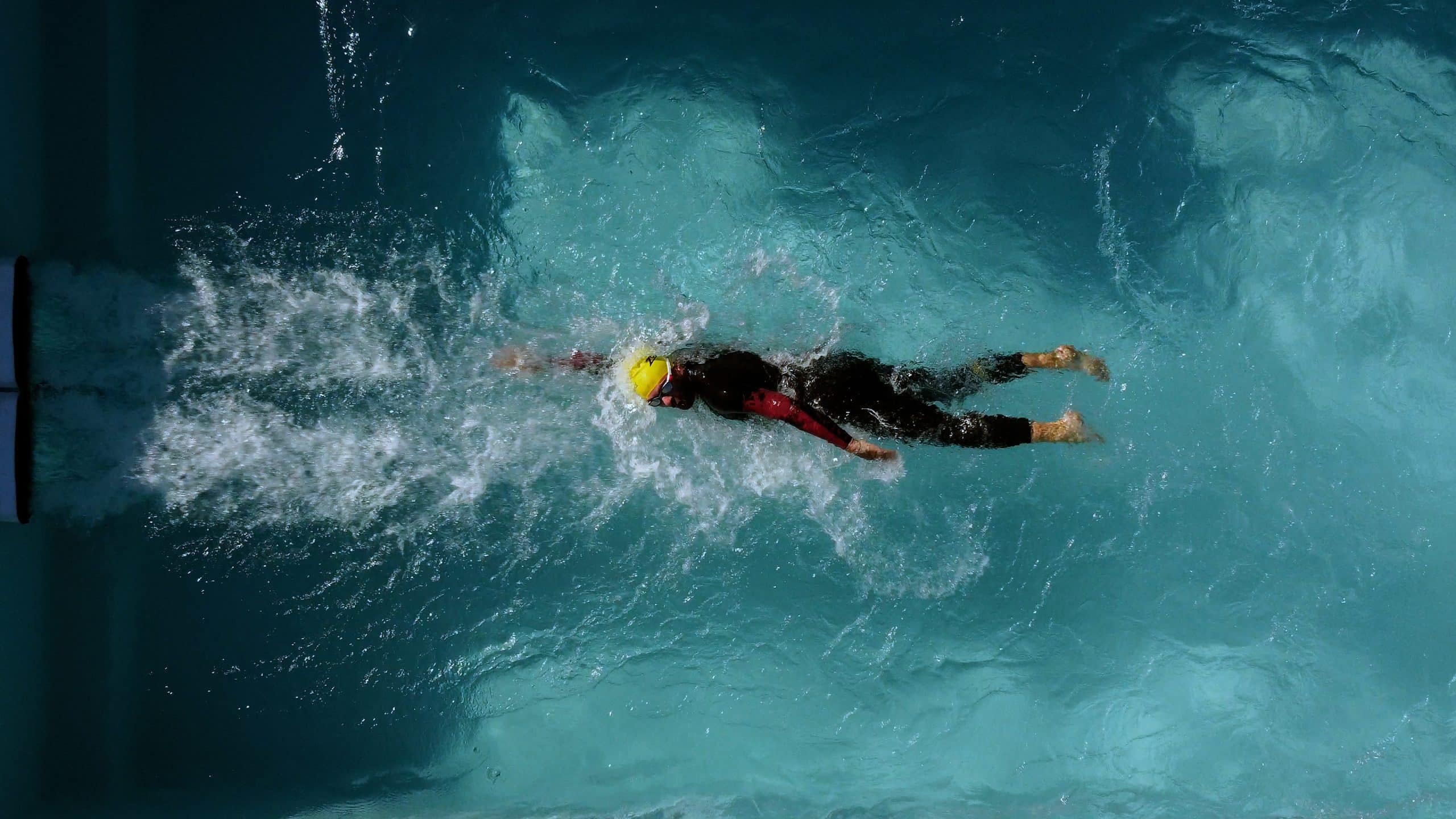
6 Tips for exercising and building muscle in the pool
The pool is the perfect place to stay fit and build muscle – but not without effort, of course! How to do it? What are the exercises that work best? What is the benefit of having a counter-current swimming system? Discover our six tips before diving into the pool.
3. Think about fins
Using fins in a pool has many advantages. Short or medium fins are flexible and comfortable to use (especially since you’re not looking to swim far in a pool). They work your thighs, glutes, and calves. Make sure to start your movement from the hips, not the knees, to avoid tiring too quickly or, worse, injuring yourself. Use wide, sweeping movements up and down, and focus on your breathing.
If your goal is to tone your body, alternate sessions with fins and sessions without fins to avoid building too much muscle mass in the thighs.
4. Don’t forget the snorkel
Good swimming means swimming with your head underwater. However, when working on the legs, it’s not uncommon to arch your back to keep your face above water. This misaligns the body, eventually leading to neck and back pain.
The solution? Use a front snorkel to breathe without having to move your neck or upper back.
5. Try counter-current swimming
Swimming in a pool to stay fit and build muscle is great. But in a private pool with limited dimensions, it can be a real challenge or result in continuous back-and-forths in a confined space.
With a counter-current swimming system, however, you have the perfect device to work out and take care of your body in a pool, even a small one. You can choose the intensity of the generated current to tailor your session to your level and preferences. You will benefit from a wide and constant current, in which it is pleasant to swim in place. By avoiding the need to go to the nearest public pool, you’ll also save time during your workout.
Also read:
6. Choose the right swim style based on your needs
While swimming generally helps to slim down and build muscle, not all strokes have the same effects and work the same parts of the body.
- Breaststroke works mainly the abs, thighs, calves, biceps, and pectorals;
- Freestyle works mainly the arms, shoulders, and abs;
- Backstroke is ideal for working the back and arms;
- Butterfly is one of the most physically demanding and difficult strokes. It mainly targets the abs and shoulders. However, it requires a good physical condition and is not recommended for beginners.
Are you interested in counter-current swimming?



